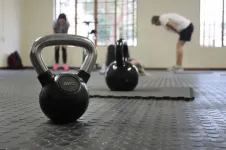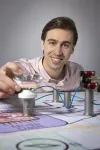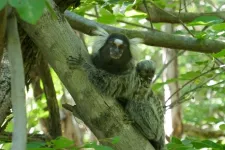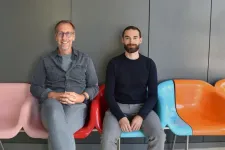(Press-News.org) For patients with alcohol use disorder, exercise not only reduces alcohol dependence, but also improves mental and physical health, per systematic review
###
Article URL: https://journals.plos.org/plosone/article?id=10.1371/journal.pone.0311166
Article Title: Effectiveness of exercise intervention in improving physical and mental status of patients with alcohol use disorders: A systematic review and meta-analysis
Author Countries: China
Funding: This study was funded by a grant from the National Social Science Fund of China, 22BTY021, awarded to LZ.
END
For patients with alcohol use disorder, exercise not only reduces alcohol dependence, but also improves mental and physical health, per systematic review
2024-10-30
ELSE PRESS RELEASES FROM THIS DATE:
Bones from Tudor Mary Rose shipwreck suggest handedness might affect collarbone chemistry
2024-10-30
Editor's Note: Please do not include the image originally uploaded with this release in any of your coverage as the licensing information has now changed. Please contact onepress@plos.org for any questions. Updated: October 30, 2024
A new study of human skeletal remains from the wreck of the 16th century English warship Mary Rose suggests that whether a person is right- versus left-handed may influence how their clavicle bone chemistry changes as they age. Dr. Sheona Shankland of Lancaster University, U.K., and colleagues present these findings in the open-access journal PLOS ONE on October 30, 2024.
The ...
Farewell frost! New surface prevents frost without heat
2024-10-30
Someday, people might finally say goodbye to defrosting the freezer or scraping frost off slippery surfaces. Northwestern University engineers have developed a new strategy that prevents frost formation before it begins.
In a new study, the researchers discovered that tweaking the texture of any surface and adding a thin layer of graphene oxide prevents 100% of frost from forming on surfaces for one week or potentially even longer. This is 1,000 times longer than current, state-of-the-art anti-frosting surfaces.
As an added bonus, ...
Similarities in brain development between marmosets and humans
2024-10-30
The development of primate brains is shaped by various inputs. However, these inputs differ between independent breeders, such as great apes, and cooperative breeders, such as the common marmoset (Callithrix jacchus) and humans. In these species, group members other than the parents contribute substantially to raising the infants from birth onwards.
A group of international researchers led by Paola Cerrito from the University of Zurich’s Department of Evolutionary Anthropology studied how such social interactions map onto brain development in common marmosets. The study provides new insights into the relationship between the timing of brain development ...
Can we protect nerve cells from dying?
2024-10-30
LEUVEN October 31st - Alzheimer’s disease is characterized by a progressive loss of nerve cells leading to a decline in memory and cognition. A team of researchers at KU Leuven and VIB explored the molecular sequence of events in this cellular demise and identified specific inhibitors that could prevent the loss of nerve cells in different mouse models of the disease. The findings open up new research avenues in the search for therapies that could halt or prevent the accumulation of brain damage occurring in ...
Why does Lake Geneva emit large quantities of CO2? UNIL scientists provide the answer and solve a scientific enigma
2024-10-30
Unlike oceans, lakes are significant emitters of CO₂. But why is this the case, and what mechanisms are at play? For the first time, UNIL scientists have successfully explained the complete carbon cycle in Lake Geneva, creating a model that can be applied to several of the world's largest lakes.
Contrary to previous beliefs, it is the natural erosion of rocks that is responsible for the significant CO2 emissions from Lake Geneva and many of the world's large lakes.
This study provides the missing piece for understanding the carbon cycle in lakes.
The LéXPLORE lake platform in Switzerland played a major role in this discovery of international ...
Double strike against blood cancer
2024-10-30
Unseen and ongoing, thousands of times every second: to keep a complex organism like humans alive, an immense number of new cells must be continuously produced. Up close, each of these cell divisions is nothing short of a miracle. Within just a few hours, not only must the entire genome – billions of “letters” long – be replicated, but most other cellular structures must be doubled so that, in the end, two complete daughter cells can emerge.
Just before division, two complex protein structures, known as centrosomes, emerge, forming two opposing poles in the mother cell. These centrosomes grow long protein filaments, the spindle apparatus, ...
Combining VR and non-invasive brain stimulation: a neurotechnology that boosts spatial memory without surgery
2024-10-30
As we age, it becomes more difficult to remember where things are—whether it’s recalling where we left the keys or where we parked the car. This spatial memory deteriorates further with the onset of dementia, a condition that someone in the world develops every three seconds, according to Alzheimer’s Disease International.
Researchers at two EPFL labs have joined forces to give a boost to spatial memory by creating a unique experimental setup that combines non-invasive deep-brain stimulation, virtual reality training, and fMRI imaging—all housed within Campus Biotech in Geneva. Published in Science Advances, the study demonstrates that targeted, ...
A rudimentary quantum network link between Dutch cities
2024-10-30
An international research team led by QuTech has demonstrated a network connection between quantum processors over metropolitan distances. Their result marks a key advance from early research networks in the lab towards a future quantum internet. The team developed fully independently operating nodes and integrated these with deployed optical internet fibre, enabling a 25 km quantum link. The researchers published their findings in Science Advances.
The internet allows people to share information (bits) globally. A future quantum internet will enable sharing quantum information (qubits) over a new type of network. Such qubits ...
Accounting for bias in medical data helps prevent AI from amplifying racial disparity
2024-10-30
Black patients are less likely than white patients to receive medical tests that doctors use to diagnose severe disease, such as sepsis, researchers at the University of Michigan have shown.
Because of the bias, some sick Black patients are assumed to be healthy in data used to train AI, and the resulting models likely underestimate illness in Black patients. But that doesn't mean the data is unusable—the same group developed a way to correct for this bias in data sets used to train AI.
These new insights are reported in a pair of studies: one published ...
MD Anderson Research Highlights for October 30, 2024
2024-10-30
HOUSTON ― The University of Texas MD Anderson Cancer Center’s Research Highlights showcases the latest breakthroughs in cancer care, research and prevention. These advances are made possible through seamless collaboration between MD Anderson’s world-leading clinicians and scientists, bringing discoveries from the lab to the clinic and back.
Epigenetic targets and genomic stem cell pathways drive adult hair regeneration
Retrotransposons are interspersed repeating sequences that make up over 40% of the human genome. Proper tissue regeneration requires ...








